With just a few ham hocks, you can make an amazing Pork Bone Broth in your slow cooker. This type of bone broth provides a nutritional powerhouse of collagen to nourish your skin, nails, hair, and gut health. Plus, this recipe makes excellent Ramen Broth too!
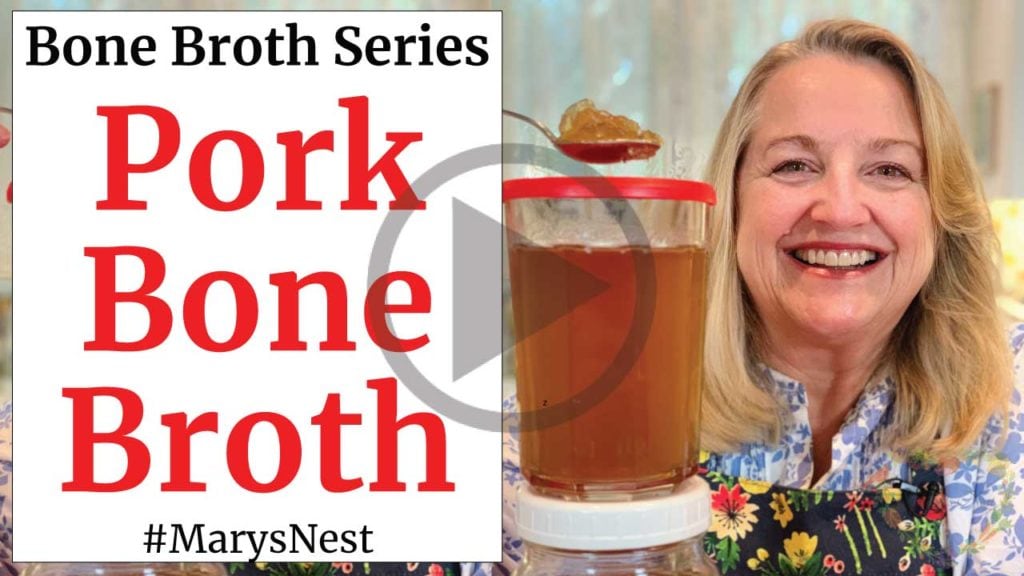
Affiliates note: As an Amazon Associate I earn from qualifying purchases. My content may contain affiliate links to products and services. If you click through and make a purchase, I’ll receive a small commission. It does not affect the price you pay.
Table of Contents
Use Ham Hocks for Pork Bone Broth
Pork bone broth is easy to make with smoked ham hocks for a wonderful flavor. But the hocks are valued for much more than their flavor.
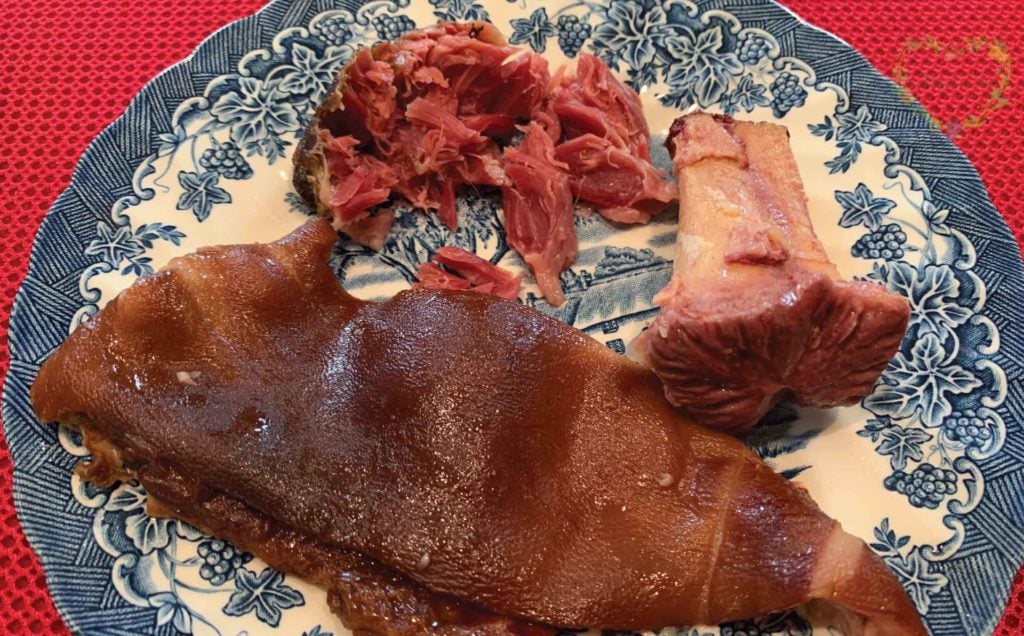
If you can find ham hocks, they will make the most nourishing bone broth, thanks to the pigskin that surrounds the hock. The pigskin is outstanding for our skin because it is very rich in collagen. It’s this collagen that, once cooked, makes the pork bone broth so gelatinous, and this gelatin nourishes our intestinal tract and helps keep our skin smooth and wrinkle-free.
Other Ingredient Options for Pork Bone Broth
But what if you can’t find ham hocks? Not to worry. You can also use ham shanks or rib bones, as well as bones from bone-in pork chops and the leg bone from a bone-in ham. Any combination of pork bones will make an excellent pork bone broth.
How Do I Use Pork Bone Broth?
Pork bone broth, like all bone broth, is very versatile. You can warm it and drink it as a beverage. You can use it in place of water when making rice and other grains. And it’s excellent for making bean soups. Also, if you enjoy making ramen, this is the broth you want to learn how to make!
More Pork Recipes
If you have pork ribs or pork chops, try these recipes for warm and delicious meals.
Did you know that lard is regaining its acclaim as a healthy fat for cooking? Yes! I’ll show you how to easily make lard by rendering pork fat.
Learn More About Bone Broth
Watch the following videos to learn more about the best bones for bone broth, why gelatinous bone broth is important, and more!
More Bone Broth Recipes
After you’ve learned how to make pork bone broth in a slow cooker, try other ways to make different types of bone broth. And be sure to print out the recipes to create your own traditional foods cookbook.
Download Your Free 36-Page Pantry List
For an extensive list of the traditional foods you can make and purchase to stock your pantry, be sure to download my free 36-page Traditional Foods Pantry List. This comprehensive eBook is full of links to recipe videos, helpful articles, and more!
And if you’re looking for a printed book full of my traditional foods recipes to show you how to create a traditional foods kitchen, be sure to order your copy of my new bestselling book, The Modern Pioneer Cookbook.
Kitchen Academy Videos
Are you looking for more traditional foods videos? If so, I invite you to join the Traditional Foods Kitchen Academy. Members of this optional paid YouTube community get access to exclusive videos, live streams, and other members-only perks. Plus, your YouTube comments include a special members-only badge.
In the following members-only video, I talk about the Importance of Cooking with Traditional Fats: Animal Fats.
Stay in Touch with Mary’s Nest
- Subscribe to My YouTube Channel for Traditional Foods Videos (Free) - When you subscribe, be sure to click on the notification bell that will let you know each time I upload a new video.
- Subscribe to Mary’s Traditional Foods Newsletter (Free) - Get a free 36-page eBook for signing up: How to Stock Your Essential Traditional Foods Four-Corners Pantry.
- Join the Traditional Foods Kitchen Academy - For more detailed videos and exclusive members-only perks, join my YouTube membership community.
- Order The Modern Pioneer Cookbook - Get a hardcover book of Mary's nourishing recipes from a Traditional Foods Kitchen. This bestselling cookbook is published by Penguin Random House with their DK imprint.
- Preorder The Modern Pioneer Pantry - Be one of the first to get Mary's hardcover book about preserving food and making delicious meals from your Four Corners Pantry. Mary's second cookbook is also published by Penguin Random House.
I look forward to having you join me in my Texas Hill Country Kitchen!
I’d like to receive more tips and recipes from Mary’s Nest.
How To Make Pork Bone Broth in the Slow Cooker
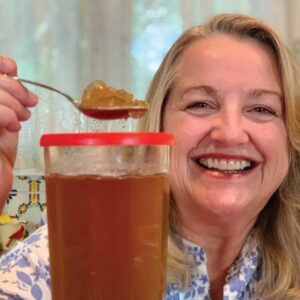
Equipment
- 8-Quart Slow Cooker (If using a 6-Quart slow cooker, reduce bones to 3 pounds and water to 3-Quarts.)
Ingredients
- 4 pounds Ham Hocks Or another mix of pork bones, including ham shanks and ham bones.
- 1 cup Fortified wine, such as Madeira, Marsala, or Port (regular wine can also be used) Optional
- 1/4 cup Apple cider vinegar (ACV) If using ACV, omit fortified wine.
- 3 Onions, quartered with skins on
- 3 Celery stalks including leaves, large chop
- 3 Carrots, unpeeled and large chops
- 2 Bay leaves
- 10 Peppercorns
- 4 quarts Filtered water You may need less water. You just want to use enough water to cover all the ingredients.
Instructions
- Place all the ingredients into the slow cooker. If you choose to use the fortified wine or wine, you can omit the apple cider vinegar. Add water to the slow cooker or stockpot just to cover all the ingredients.
- Turn the slow cooker to the high setting for one hour, then turn it down to the keep warm setting and allow to simmer on keep warm for six hours. If your slow cooker does not have a keep warm setting, turn it down to the low setting, but tilt the slow cooker lid to allow for some of the steam to escape to prevent the bone broth from boiling.
- After six hours, turn off the slow cooker. Allow broth to cool slightly, and then begin to strain ingredients with a slotted spoon. Reserve meat, bones, and skin to be reused to make a second batch of broth. (Or just reserve bones and skin for a second batch of bone broth and eat the meat.)
- Once all the ingredients have been strained from the broth, line a colander with a cheesecloth or flour sack towel and place over a deep pot. Use a ladle to transfer the broth from the slow cooker or stockpot into the lined colander. The broth will drain through the lined colander into the deep pot. This will help to strain out the small bits of meat, vegetables, etc., that were not strained out with the slotted spoon.
- Once all the broth has been strained through the lined colander into the deep pot, transfer this pot to the refrigerator until the fat rises to the top and congeals. (Or you can use a fat separator to remove the fat before refrigerating. See video.)
- Upon removing the bone broth from the refrigerator, skim off the fat that has risen and congealed at the top, and transfer the fat to a separate container to be used in other recipes. Transfer the broth to one or more containers with a cover that can then be refrigerated or frozen.
- Depending on how you plan to use it, you can store the broth in multiple smaller containers or one single large container. This bone broth will stay fresh for 3-4 days when refrigerated. If frozen in the freezer of a refrigerator, it will stay fresh for 6 months. In a separate freezer that is not opened frequently, it will stay fresh for up to 12 months.
Video
Notes
Shop for items used in this blog post or video
Favorite Kitchen Supplies
- 8-Quart Duo Plus Instant Pot
- 16-Quart Stock Pot
- 8-Quart Stock Pot
- 7-Quart Slow Cooker
- 8-Quart Slow Cooker
- 10-Quart Slow Cooker
- Fat Separator
- Stainless Steel Strainer
- Flour Sack Towels
- Half Gallon Glass Jars
- Wide Mouth Plastic Storage Lids
- Two Cup Glass Storage Jars with Lids
- One Cup Glass Storage Jars with Lids
Amazon Shop and Shopping Guide
- Visit Mary’s Nest Amazon Shop
- Visit my Shopping Guide page
Get up to 15% off for stocking your Traditional Foods Pantry and equipping your Modern Pioneer Kitchen, including discounts from US Wellness Meats, Farmhouse Teas, Lehman's, Masontops, Cultures for Health, Survival Garden Seeds, Redmond Real Salt, Plan to Eat, and More!
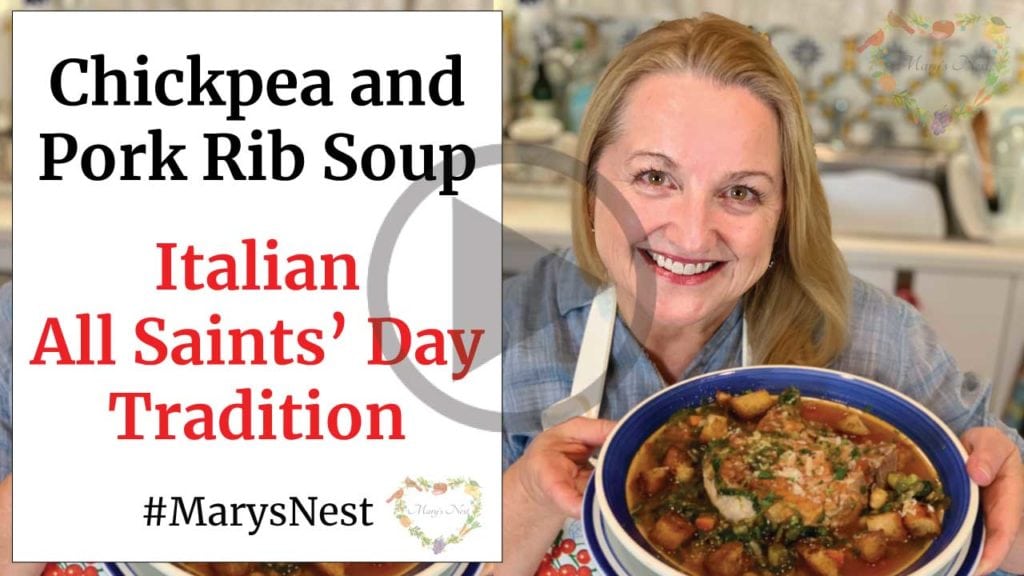

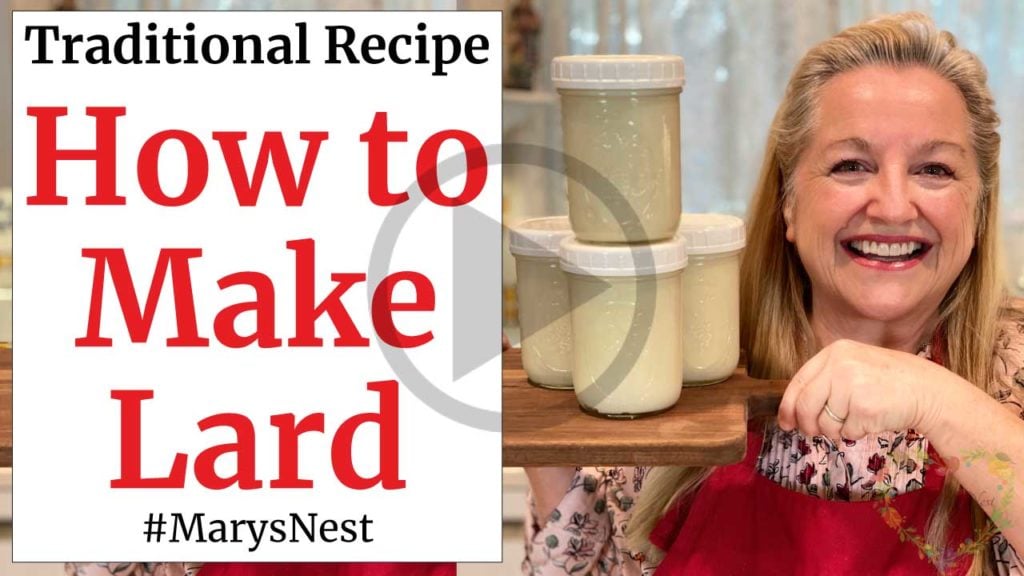
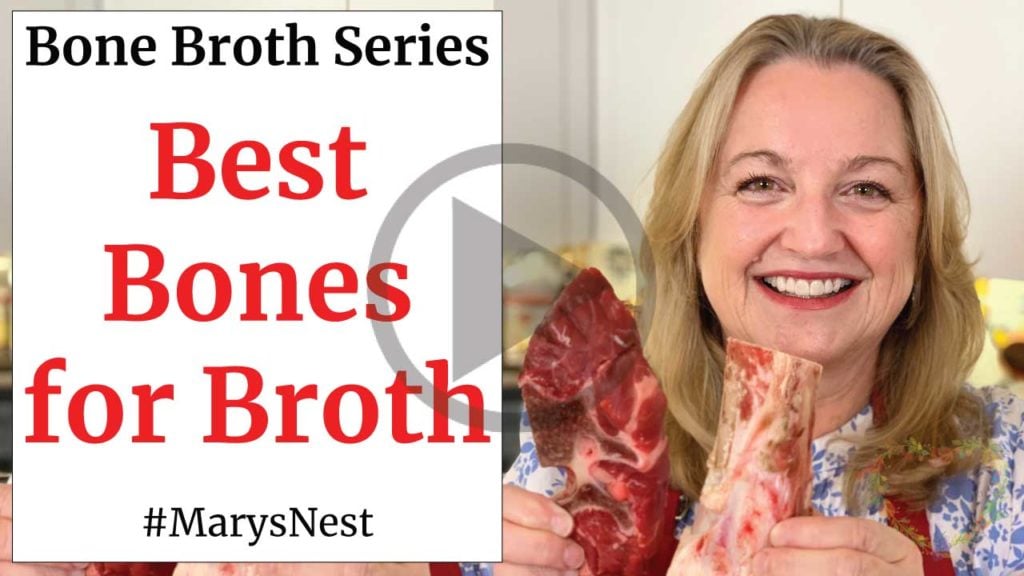
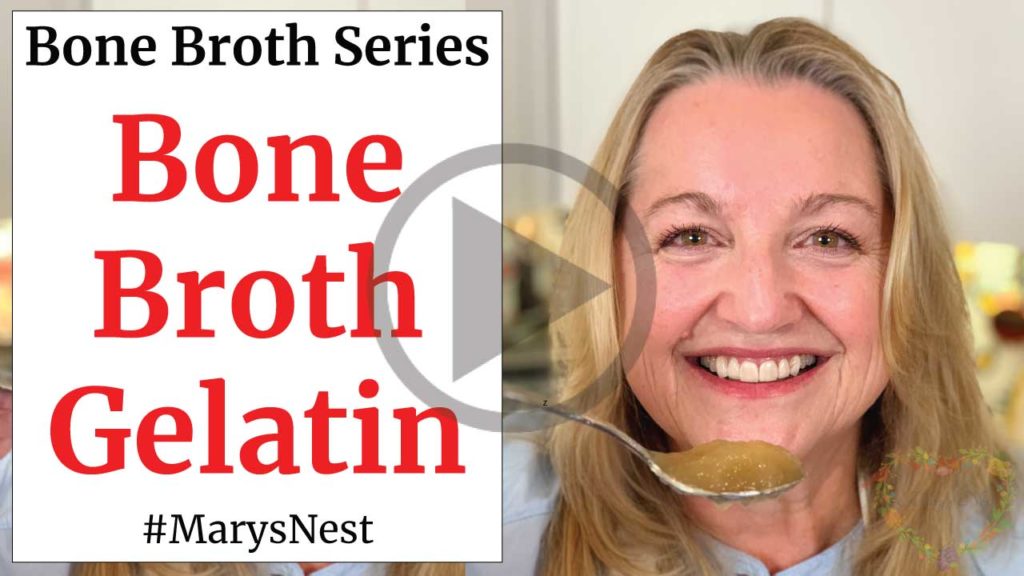
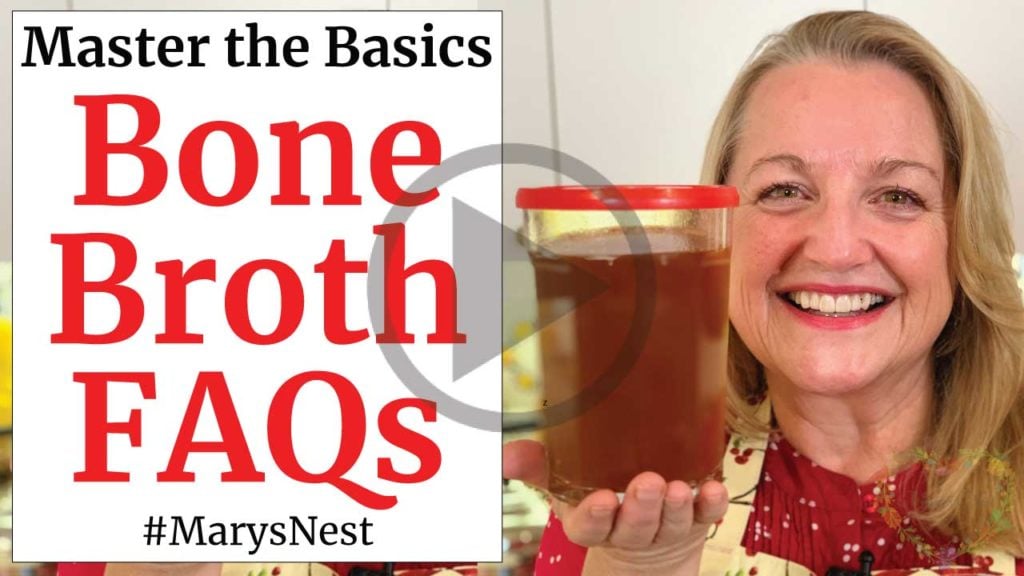
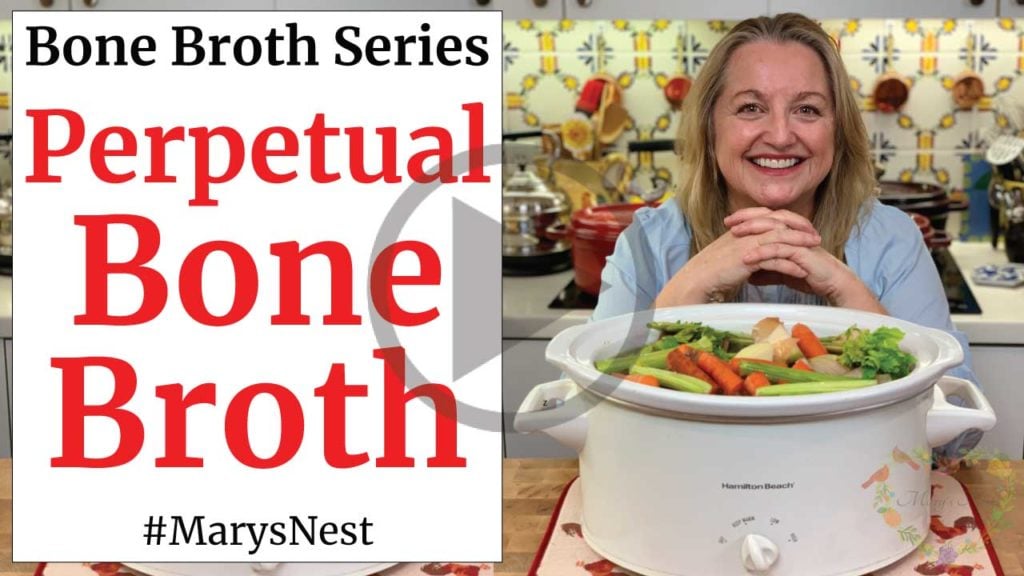
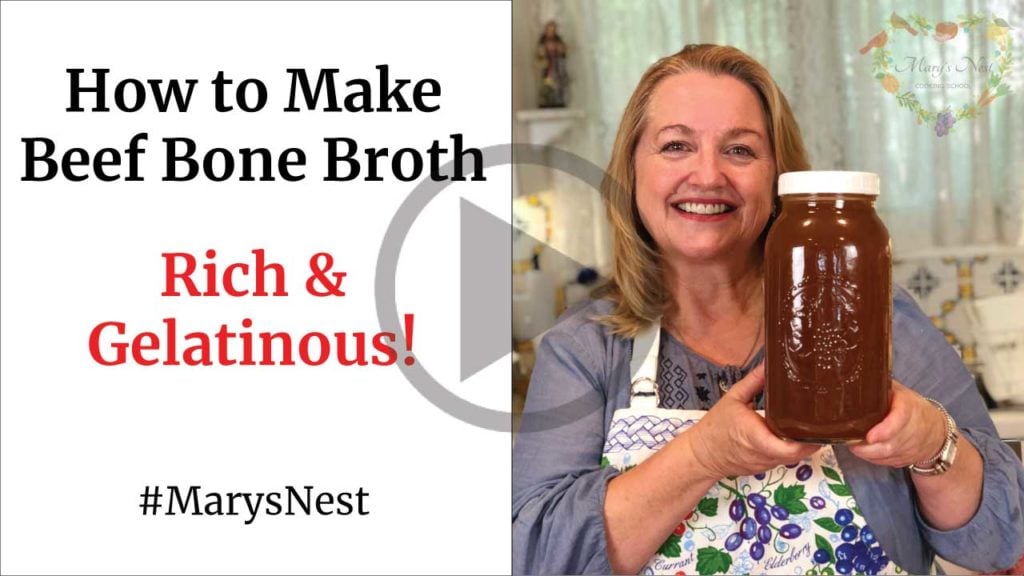
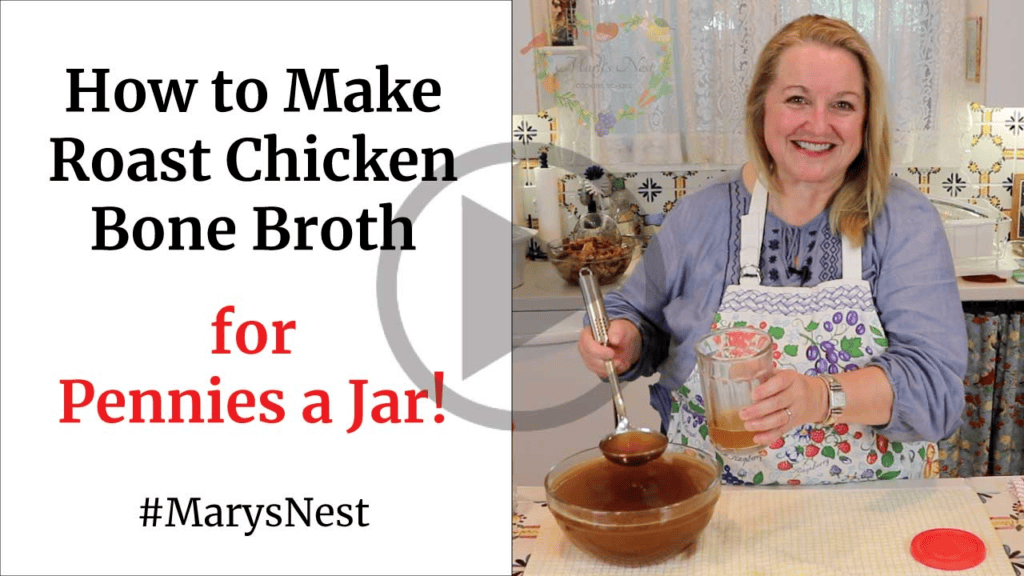
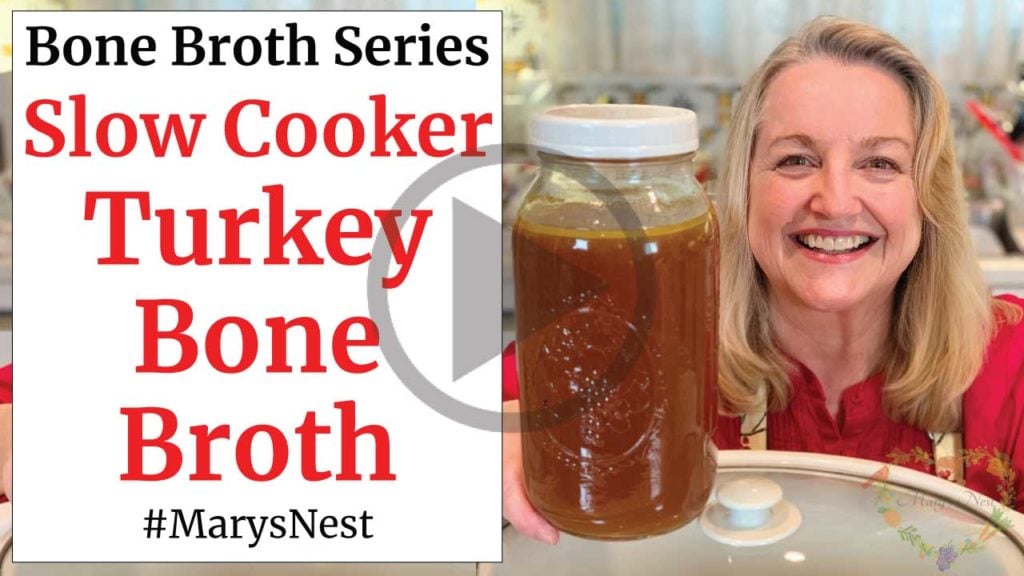
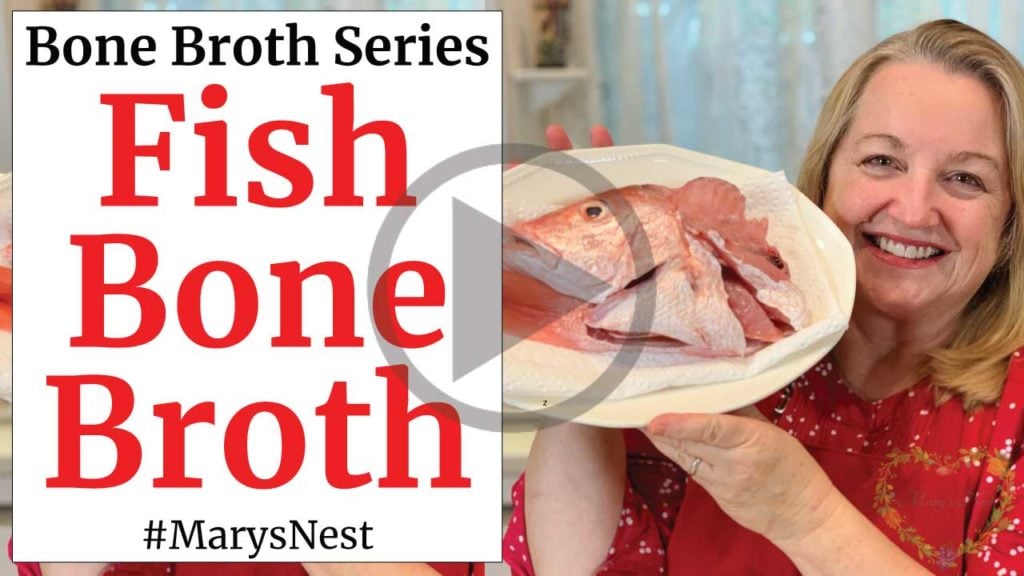
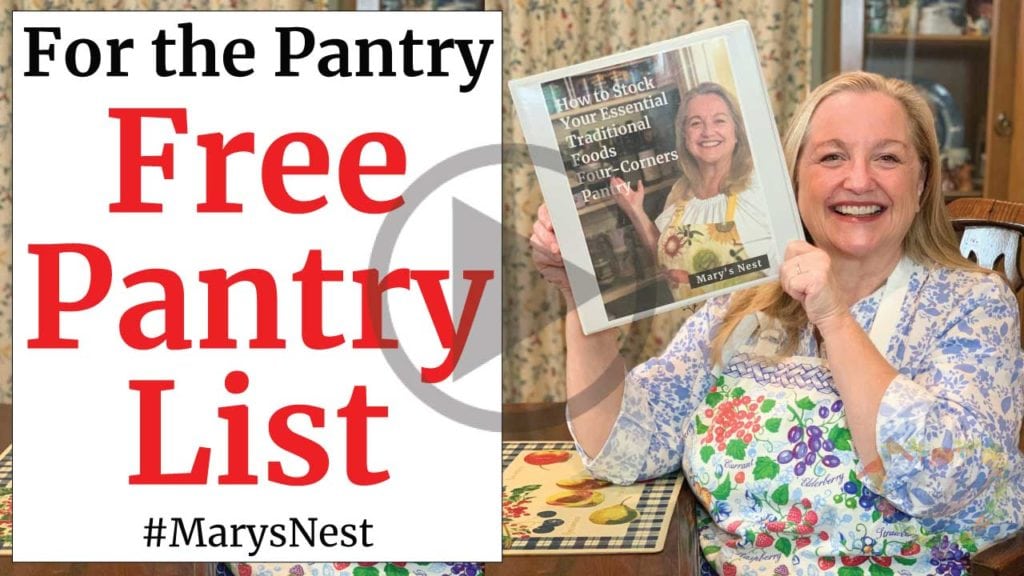
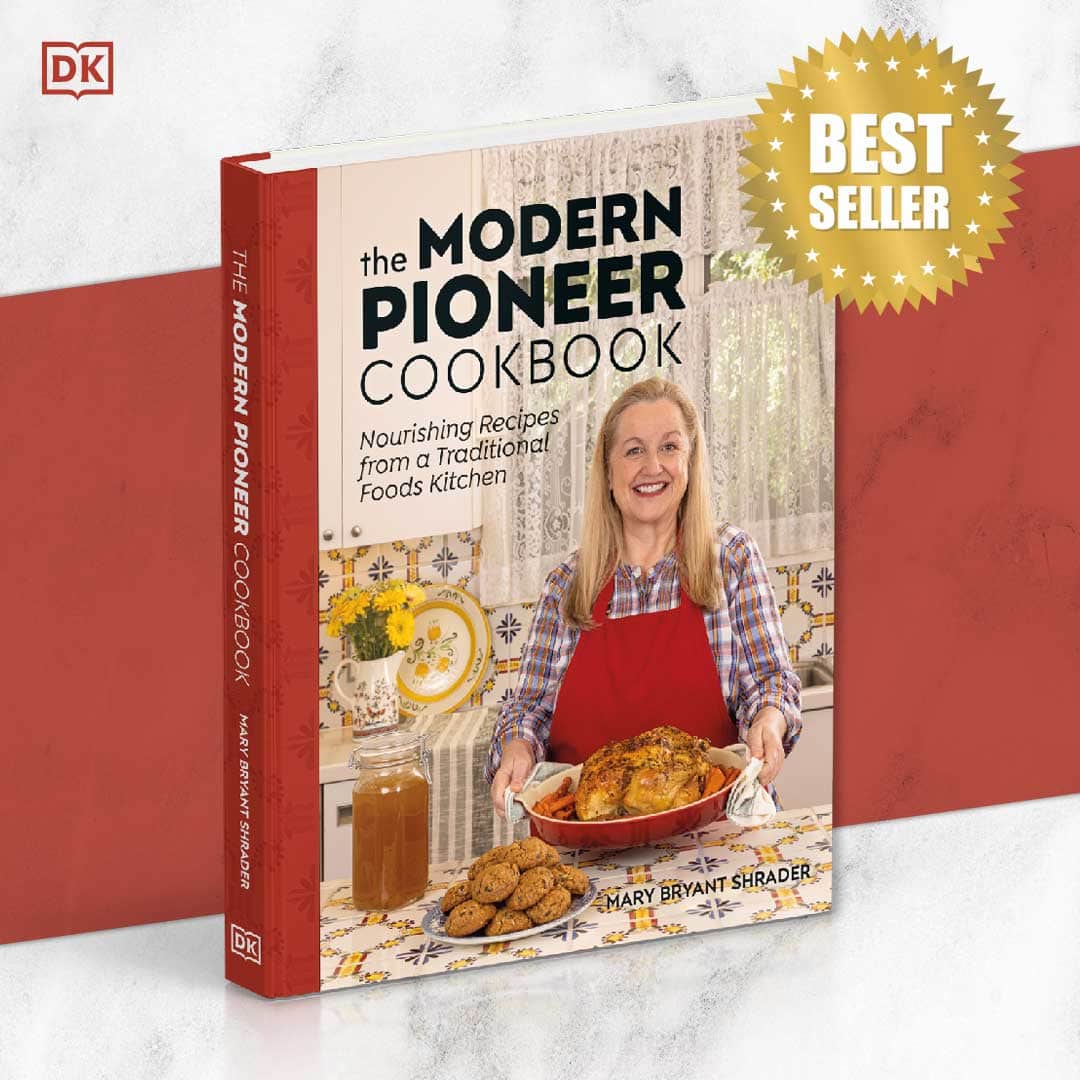
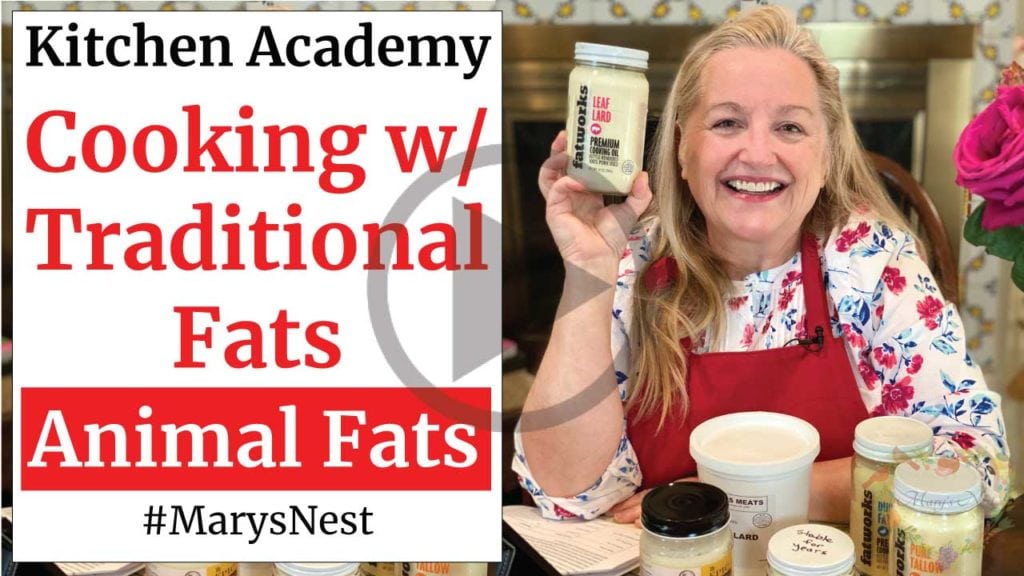
Hi Mary,
Thanks for the pork bone broth recipe!
Look forward to your updates.
Thanks Sharon Robinson
Hi Sharon,
Thanks for your kind comment. I’m happy we’re on this traditional foods journey together! 🙂
Love and God bless,
Mary
You mention saving the meat and bones for a second batch of bone broth. Do you follow the same recipe to do that? Thanks! Can’t wait to try this!
Hi Shelly, Yes, save the bones and repeat the recipe. Enjoy! Love, Mary
I made ham bone broth. I would like to make bean soup. Not sure if I should cook the beans in the broth or press cook them. Suggestions?
Hi Kim, Great question. I would recommend giving one pound of beans a long soak up to 48 hours, changing the water regularly. Then pressure cooking them for 15 minutes in 4 cups of bone broth to make your soup. Alternatively, you could cook your beans on the stovetop in your bone broth to make your soup but it will take a bit longer to cook to get the beans nice and tender – 30 minutes to one hour or more depending on the type of bean. Love, Mary